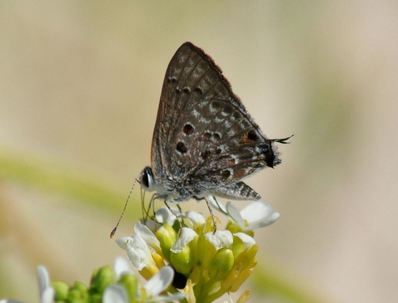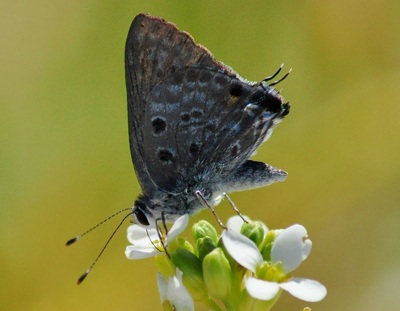Lycaenidae : Theclinae
Strymon toussainti (Comstock & Huntington, 1943)
Toussaint's Scrub-Hairstreak
Strymon toussainti (Comstock & Huntington, 1943)
Toussaint's Scrub-Hairstreak
Description and Similar Species: Wingspan 23-26mm. Sexes are similar though males have a small darker androconial patch in the centre of the upper forewing. Could be easily overlooked for Mallow Scrub-Hairstreak Strymon istapa but on S. toussainti the row of dots on the under forewing are staggered and offset, and on the hindwing the two black spots near the costa are larger and closer together. The upperside is similar to S. istapa.
Range: Endemic to Puerto Rico, Hispaniola and a small area at the east end of Cuba within the U.S naval base at Guantanemo.
Status: Rare on Cuba and the few sightings have been in xeric areas in and around the Guantanamo Bay area at the far east end of the island.
Nectar Plants: Bidens pilosa, Ageratum conyzoides, Melochia tormentosa, Lippia nodiflora, Croton linearis, and Heliotropum curassavicum.
Larval Foodplants: Unknown.
Range: Endemic to Puerto Rico, Hispaniola and a small area at the east end of Cuba within the U.S naval base at Guantanemo.
Status: Rare on Cuba and the few sightings have been in xeric areas in and around the Guantanamo Bay area at the far east end of the island.
Nectar Plants: Bidens pilosa, Ageratum conyzoides, Melochia tormentosa, Lippia nodiflora, Croton linearis, and Heliotropum curassavicum.
Larval Foodplants: Unknown.

